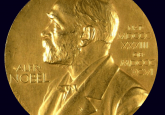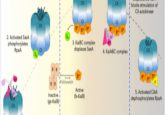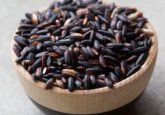Nobel Prize for circadian clocks
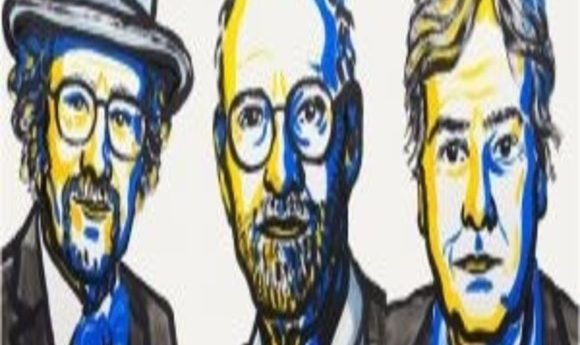
Early this morning, Jeffrey Hall, Michael Rosbash, and Michael Young were awarded the 2017 Nobel Prize in Physiology or Medicine for their discoveries of the molecular mechanisms controlling circadian rhythm.
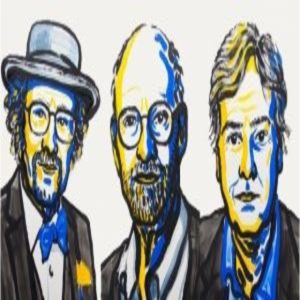
Credit: Niklas Elmehed, Nobel Media 2017
Earlier today, the Nobel Prize Committee announced that Jeffrey Hall from the University of Maine, Michael Rosbash from Brandeis University, and Michael Young from Rockefeller University were awarded the 2017 Nobel Prize in Physiology or Medicine. “Their contribution to humankind is the discovery of the fundamental mechanism underlying very important aspects of physiology—how our cells can keep time,” said Carlos Ibanez, a member of the Nobel Committee, during the prize announcement news conference.
Within every living organism lies a clock that modifies hormones, temperature, metabolism, or behavior to match the time of day. This clock is so ingrained in physiology that some animals can keep perfect rhythm despite differences in daylight hours. This clock can even cause humans to experience significant side effects when traveling through time zones, and chronically mismatching our behavior and daylight hours is linked to diseases such as cancer.
Astronomer Jean Jacques d’Ortous de Mairan first recorded evidence of circadian rhythms in the 18th century when he noticed that the mimosa plant opened and closed its leaves according to daylight hours, even when kept in the dark. Following that first observation, scientists recorded evidence of internal clocks in other plants, animals, and humans. But just how cells responded to time without using external cues remained a mystery.
In the 1970s, researchers working with Drosophila identified a gene that, when mutated, disrupted the fly circadian rhythms; they named the gene period (PER). In 1984, Young, Hall, and Rosbash isolated this gene. With further study, Hall and Rosbash found that the PER protein accumulated in the nucleus during the night and then degraded throughout the day in a 24-hour oscillation pattern controlled by inhibitory feedback. But how exactly did PER travel from the cytoplasm back into the nucleus to inhibit further gene expression?
Young answered this question 10 years later when he identified a second circadian gene, timeless, which encodes the TIM protein. TIM binds PER in the cytoplasm, and together they traverse the nuclear membrane and block PER gene expression. Young went on to identify another gene, doubletime, that regulates PER accumulation, keeping the cycle in sync with a 24-hour day.
In later studies, Young, Rosbash, Hall, and many other researchers elucidated additional key components of the circadian control mechanism in cells. Scientists have since revealed how essential circadian rhythms are to human health by showing ties to alertness, blood pressure, stress hormone levels, body temperature, sleep, coordination, and reaction times. Researchers have also detected connections between circadian rhythms and an array of human diseases.
“Since the paradigm shifting discoveries by Hall, Rosbash, and Young, circadian biology has developed into a highly dynamic research field with vast implications for our health and well-being,” said Thomas Perlmann, Secretary of the Nobel Assembly as he made the announcement this morning.

